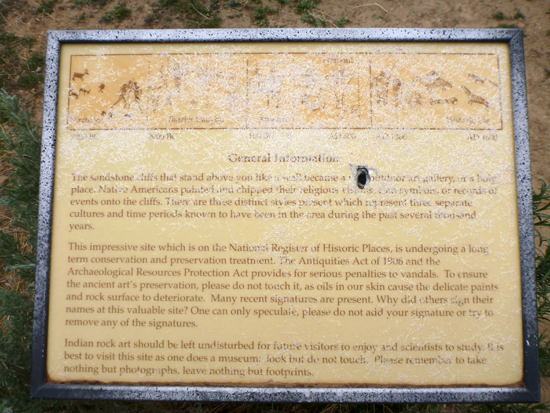
Interpretive Sign - General Information
The sandstone cliffs that stand above you like a wall became an outdoor art gallery, or a holy place. Native Americans painted and chipped their religious visions, art symbols, or records of events onto the cliffs. There are three distinct styles present which represent three seperate cultures and time periods known to have been in the area during the past several thousand years. This impressive site which is on the National Register of Historic Places, is undergoing a long term conservation and preservation treatment. The Antiquities Act of 1906 and the Archaeological Resources Protection Act provides for serious penalties to vandals. To ensure the ancient art's preservation, please do not touch it, as oils in our skin cause the delicate paints and rock surface to deteriorate. Many recent signatures are present. Why did others sign their names at the valuable site? One can only speculate, please do not add your signature or try to remove any of the signatures. Indian rock art should be left undisturbed for future visitors to enjoy and scientest to study. It is best to visit this site as one does a museum: look but do not touch. Please remember to take nothing but photographs, leave nothing by footprints.